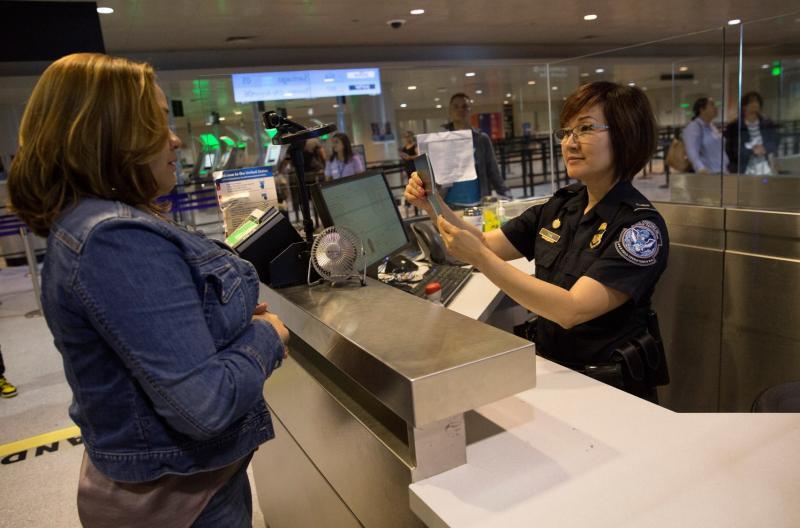This article is summarized by Shakeel Jessa

Photo courtesy of U.S. Customs and Border Protection
The Office of International Student Affairs staff took a trip to Boston Logan International Airport to meet with Customs and Border Protection (CBP) agents to gain crucial insider rules concerning travel for international students.
- Always DECLARE: Whether it is food, cash, perishable items, gifts; items you didn’t have with you when you left the United States that fall outside your personal exemption must be declared. The CBP officer stresses greatly that you must declare truthfully, especially in regards to money (including traveler’s checks, money orders, gold coins, cash, checks, promissory notes, securities or stocks). If you are bringing $10,000 USD (or the equivalent of foreign currency) or more in cash in and you fail to declare it, it will be confiscated.
- When presenting your documents to the officer you should already have your passport, F-1 visa and 1-20 out before you get to the customs officer’s booth. Take the I-20 and place it where your F-1 visa is, in the passport, so that the officer can immediately find it when they grab your documents
- Know your story and status. This point is CRUCIAL. CBP officers on average only have 60 seconds to make a decision: to let you through or send you to secondary. Knowing your story and being ready for questions will be more convincing while pausing and fumbling around is a one-way ticket to a secondary check. Answer only the questions asked.
- Though not always easy to coordinate, arrival times between 9 AM and 3 PM are optimal, because that is the time when the most experienced CBP officers are working. They will be better able to help with problems as they have seen almost every possible situation for people trying to enter and will know the common issues.
- Weed transportation: Airports are federal buildings and thus, as marijuana is not federally legal, weed is illegal in any airport.
- F1 visa holders should never go to the kiosk at the port of entry. This is because you run the risk of entering yourself in the wrong status. If this happens and you exit the airport with the wrong status, you have to exit the country and return in the proper status. If you do make a mistake and put yourself in the wrong status, go to the customs agent and they will be able to fix it for you if you have not exited the airport.
- Some airports no longer do visa stamps on passports. They rely solely on the electronic I-94 system. Therefore, it is a good practice to always check your I-94 within 48 hours of arrive in the U.S to make sure that it is correct, and you have entered the country in the right status. To check your I-94, visit https://i94.cbp.dhs.gov/I94/.
Boston Logan International Airport receives an average of 8,000 international fliers a day and in peak season it can be upwards of 15,000. You only have 60 seconds at primary, If they can’t make a decision to let you in at that time, you will take a trip to secondary. And that is a place you just don’t want to be. Follow the guidelines listed above for a safe return to the United States.


